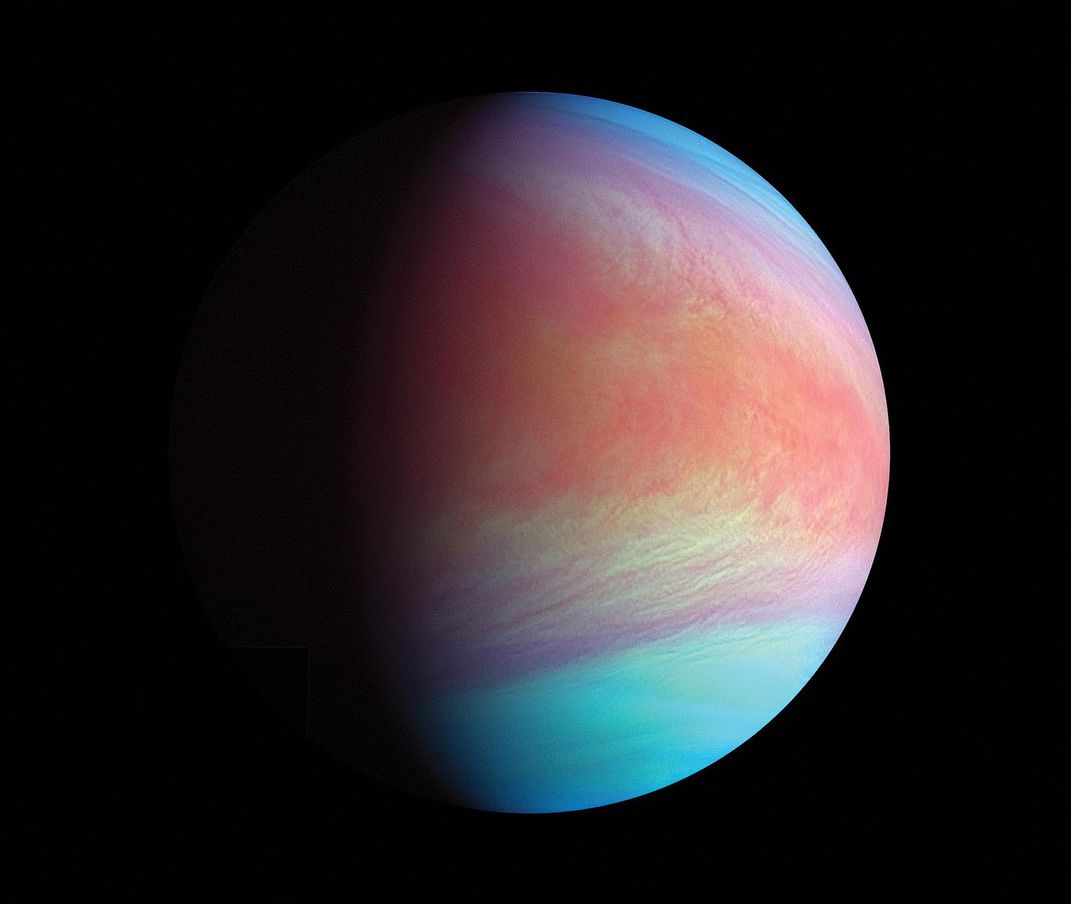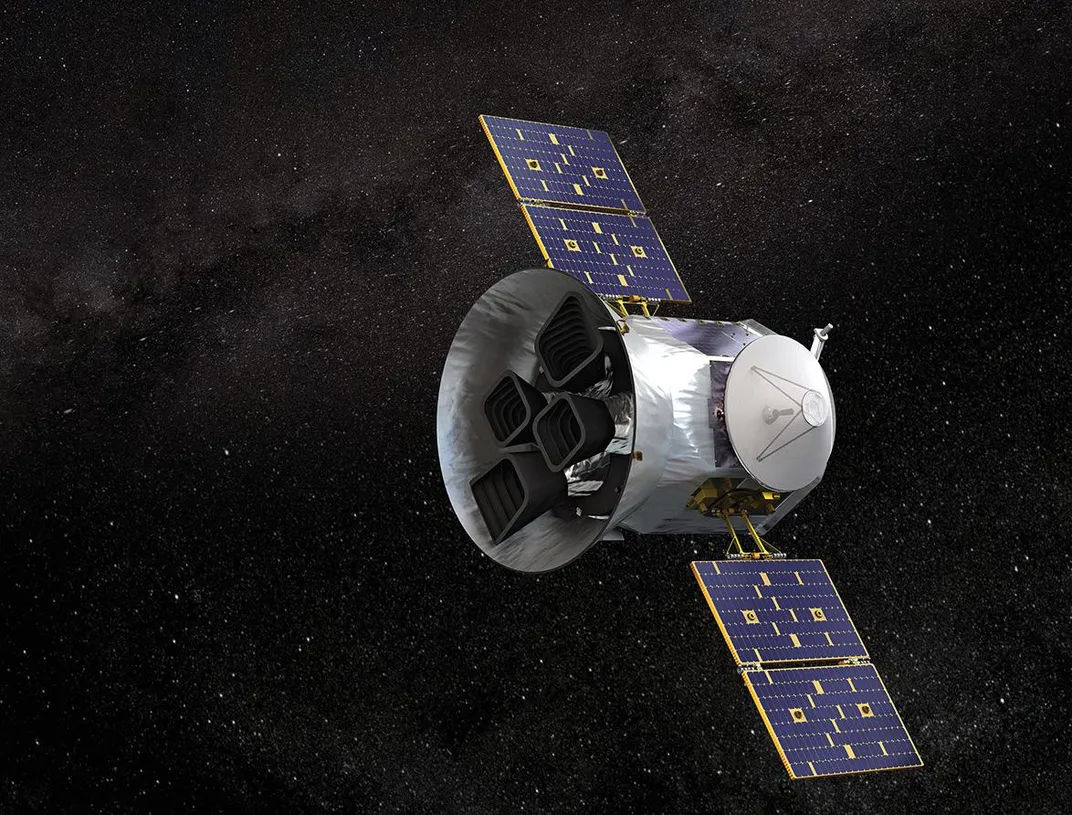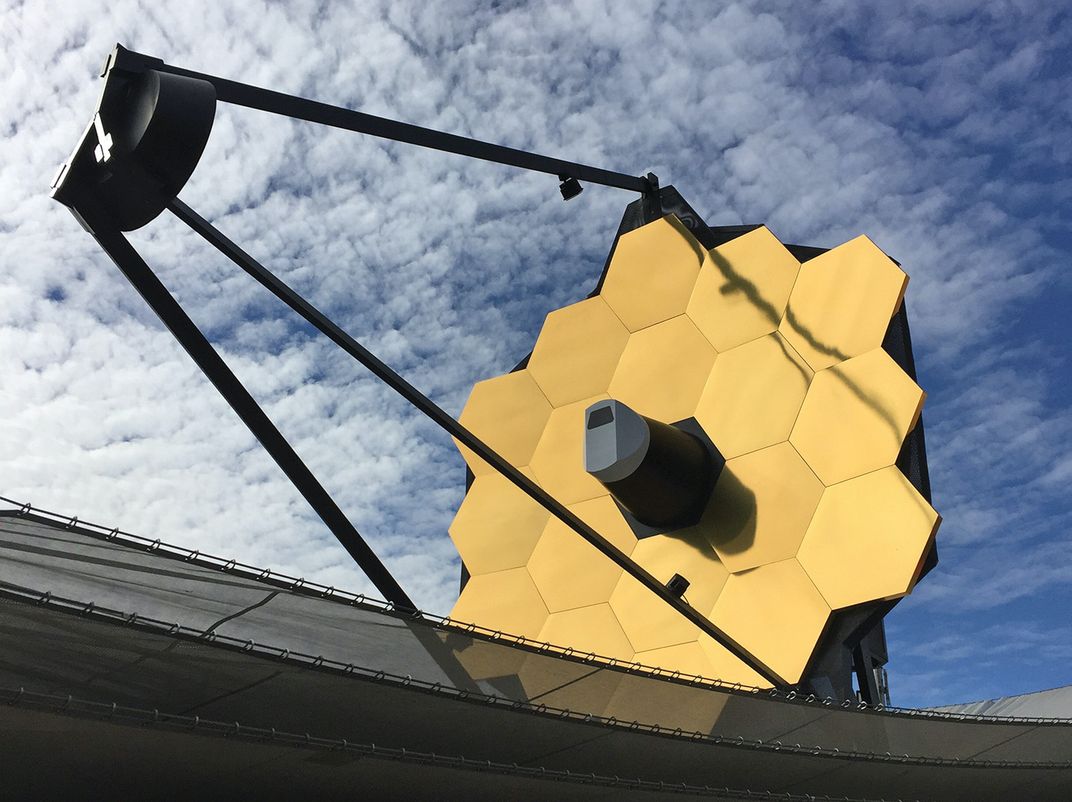Will We Recognize Extraterrestrial Life When We See It?
A leading expert on planetary astronomy reflects on what the next generation of space telescopes might reveal.
/https://tf-cmsv2-smithsonianmag-media.s3.amazonaws.com/filer/77/2a/772afe00-9f0b-4dd0-b4d6-c800e96bfa47/15l_jj2021_trappist1systemcaltech_live.jpg)
When I look up at the stars, I love to wonder what kind of planets might be around each one. Every star is a sun, and astronomers have found thousands of planets orbiting other stars, called exoplanets. Perhaps there are intelligent beings on a distant planet, looking back at our sun—a star to them—wondering the same thing.
We astronomers are unabashedly anticipating a paradigm shift in exoplanet characterization—made possible by a sophisticated new telescope over 30 years in the making: the James Webb Space Telescope, set for launch this October. Webb will undergo a series of daunting deployments, including the unfurling of a tennis court-sized, five-layer sunshield before reaching its destination a million miles away from Earth. Thousands of astronomers all around the world have pinned their research hopes and dreams on Webb, not just for exoplanets but for many frontier topics in astronomy. But for those of us studying exoplanets, Webb will open a new window.

Webb will bring us our first chance to routinely observe small rocky exoplanet atmospheres. Atmospheric water vapor would indicate the presence of surface liquid water oceans—key because a liquid solvent is needed for life. Imagine: Soon we may know that rocky planets with liquid water exist and are common—implying that habitable worlds might be all around us. Even more compelling is the chance to identify atmospheric gases that might be attributed to life, called biosignature gases. For example, molecular oxygen fills Earth’s atmosphere to 20 percent by volume but is so highly reactive it should not be present at all, without continual replenishment—in this case, by plants and photosynthetic bacteria. If molecular oxygen appeared in the atmosphere of a small rocky exoplanet, we would likewise assume that some process is at work there to continually replenish it. Admittedly, getting a strong robust signal from small exoplanet atmospheres might be tough for Webb, possibly right at the edge of its capabilities. True Earth twins—those Earth-size planets in Earth-like orbits about stars like our sun—are completely out of this telescope’s reach.
Instead, Webb’s ultimate lottery ticket is one of the handful of small planets transiting small red dwarf stars. Such planets orbiting in the “Goldilocks zone” will be different from Earth: locked into a rotation rate that causes a permanent day and permanent night side and bombarded by intense high-energy radiation from frequent stellar flares.

We may have already found a biosignature gas right next door, on our sister planet Venus. Venus, with its scorching surface so hot no life of any kind could survive, seems an unlikely abode. But a cloud-filled layer well above the surface does have a suitable temperature for life. The cloud environment is very harsh—highly acidic and incredibly dry—nonetheless, people have speculated about life in the Venus clouds for more than half a century.
I was part of a team led by Professor Jane Greaves that recently reported the detection of phosphine gas from radio telescope observations of Venus. We calculated that no known chemical process—from volcanoes to lightning to meteorite delivery and more—could produce phosphine in anywhere near the part-per-billion quantities inferred from our data. In addition, there simply is not enough hydrogen nor the right temperatures and pressures for phosphine (PH3) to form on its own. We are left with the possibility of unknown chemistry, or more speculatively, the possibility of life. On Earth, phosphine gas is associated only with life, produced by bacteria in oxygen-free environments such as wetlands and by humans for industry.
What followed our announcement was healthy, but unexpectedly harsh, skepticism from the scientific community. Some reanalyzed our data and did not find the signal. Others re-found the signal but attributed it to sulfur dioxide and not phosphine. Another team found independent evidence for phosphine in archived data taken directly in the Venus atmosphere by the 1978 NASA Pioneer Venus probe. Many scientists insisted the presence of phosphine can be explained by known chemistry, though no claims have yet been substantiated with scientific publications. The debate about phosphine gas on Venus will continue.
My exoplanet “finish line” has suddenly moved from a few years away to infinitely distanced. For even if we find a potential biosignature gas in an exoplanet atmosphere with Webb (or another of the planned or proposed next-generation telescopes), will the community agree that a tiny signal is more than noise in the data? If a robust signal is found, is there any way to associate the gas with life and not from chemistry in an unknown planetary environment? After all, we will have vastly less information for distant exoplanets as compared to up-close Venus, a planet with decades of observations and visits by over two dozen spacecraft.

Thankfully scientists have no shortage of imagination. Starshot is a project to launch thousands of tiny spacechips with four-meter-wide solar sails, accelerated to 20 percent the speed of light by a bank of coherent ground-based lasers with a combined power of gigawatts. After a 20-year journey to our nearest star system, Alpha Centauri, some of the surviving and still rapidly traveling starchips will take and send images of any planets back to Earth. An equally ambitious concept envisions a spacecraft 50 billion miles away from Earth, perfectly lined up with the sun and a distant exoplanet. The telescope can then use the sun as a powerful gravitational lens to magnify the exoplanet so highly that the planet surface could be imaged at a resolution of 10 kilometers.
The discovery and characterization of exoplanets has come a long way in the millennia since humans have pondered the mysteries of the multitude of stars. We are lucky to be the first generation who will not just hope, but can truly explore the nearest stars for worlds that are habitable, and just maybe, inhabited.
MIT Professor Sara Seager’s research has introduced many foundational ideas to the field of exoplanets and is now focusesd on the search for the first Earth-like exoplanets and signs of life on them.
